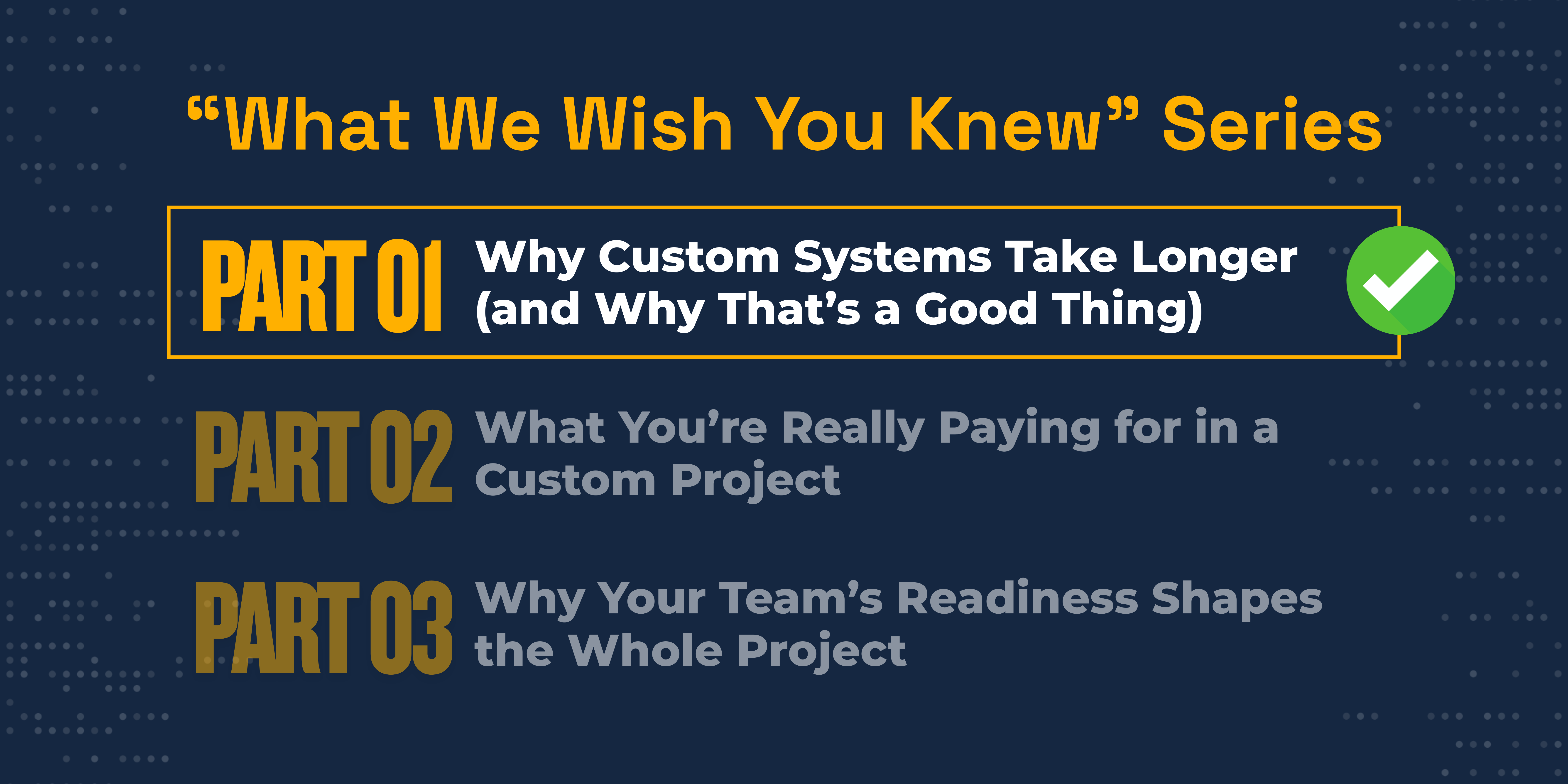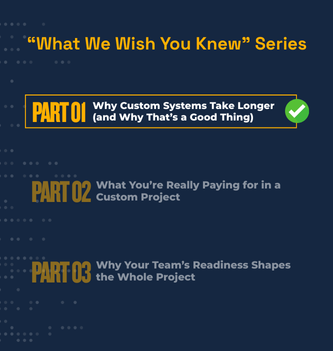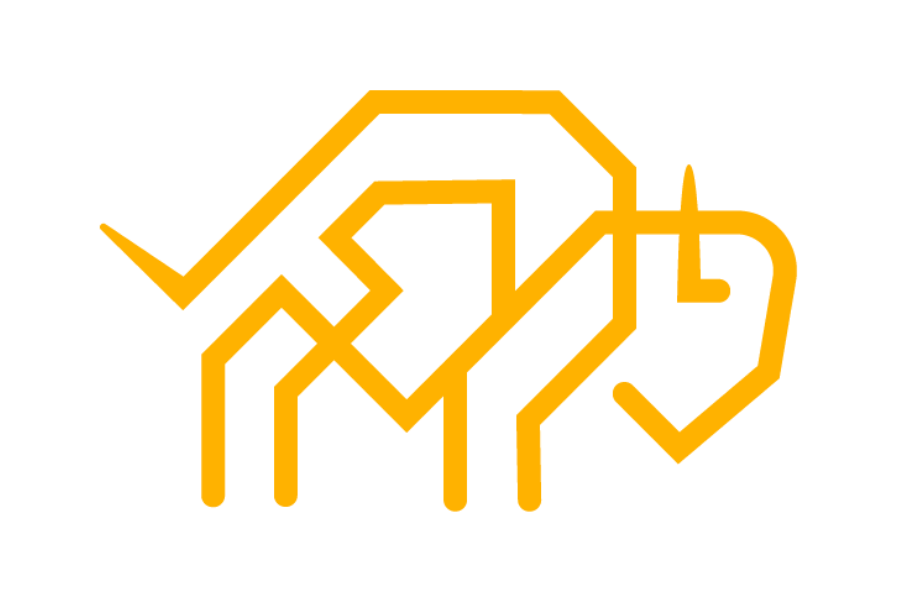

Many businesses wonder why custom systems take longer to build—unsurprisingly, the truth is, that extra time brings huge benefits.
To start with, this is the first post in our 3-part “What We Wish You Knew” series—created to help organizations understand how to get the most from working with a digital solutions agency like Bizont, and how to set realistic expectations for a successful partnership.
When it comes to technology projects, timelines are often a top concern, and in addition, budget is always a key factor.
Naturally, “How long will it take?” is usually one of the first questions we hear after discussing a project’s scope.
If you’ve ever bought a commercial off-the-shelf (COTS) solution, you might expect your new system to be up and running in weeks—for instance, often encouraged by optimistic promises from sales reps and onboarding managers.
As a result, in our Beyond the Bid series post, Beyond the Bid: Total Cost of Ownership, we explored how a lower upfront cost can lead to higher long-term expenses. The same principle applies to timelines: in other words, a shorter build time isn’t always a better deal.
Therefore, understanding why timelines differ is crucial. Therefore, here’s why taking the time to do it right matters.
Off-the-shelf software is designed for the masses, with features aimed at the “average” user. But your team and workflows aren’t average—they’re unique. This is especially true for government projects.
A custom system starts with:
Importantly, this is the “built-to-own” mindset we explored in our Beyond the Bid series post, Built to Own – Why Transparent Systems Matter. By creating a system that’s yours from the ground up, you get more control, better fit, and stronger long-term value.
For example, think of a custom build like constructing a house: the planning, foundation, and inspections all have to happen before the walls go up.
For software, that means:
However, skipping these steps is like moving into a half-built home. Sure, you get in sooner, but you’ll spend more time fixing problems than enjoying the result.
Moreover, one of the biggest advantages of a custom system is its ability to grow with you. That means we plan for:
In fact, it’s about avoiding costly rework—just like the Total Cost of Ownership principle teaches us: investing more time and resources upfront often saves significantly in the years ahead.
Yukon Lobbyist Registration & Oversight Platform
Specifically, built for the Yukon Legislative Assembly, this dual-access Drupal system provides a public transparency portal and a secure administrative console for managing lobbying records. Additionally, features include role-based dashboards, automated reminders, and real-time audit logs—designed for scalability and future open-data integration.
Yes, a custom system takes longer to deliver. Nevertheless, here’s what you get in return:
Consequently, you trade a little patience now for a lot less frustration later.
Clearly, if you’ve ever been through a rushed implementation, you know how costly it can be, both in dollars and in trust from your team. A thoughtful, deliberate build process might not make the fastest headline, but it’s the best investment you can make in a system that will serve you for years.
Furthermore, if you want to see how this thinking connects to procurement strategies and system design principles, check out our other Beyond the Bid series posts:
This is the first post in our 3-part “What We Wish You Knew” series—created to help organizations get the most out of working with a digital solutions agency like Bizont, and to set realistic expectations for project success. Ultimately, looking ahead, in the next post, we’ll break down What You’re Really Paying for in a Custom Project—and why the value goes far beyond just code.
If something in this post resonated—or sparked ideas—we’d love to hear from you.
If something in this post resonated—or sparked ideas—we’d love to hear from you.

Join our mailing list to receive fresh insights, stories and updates.